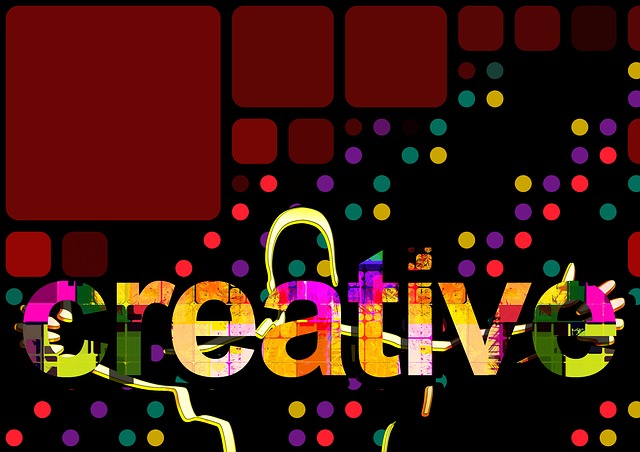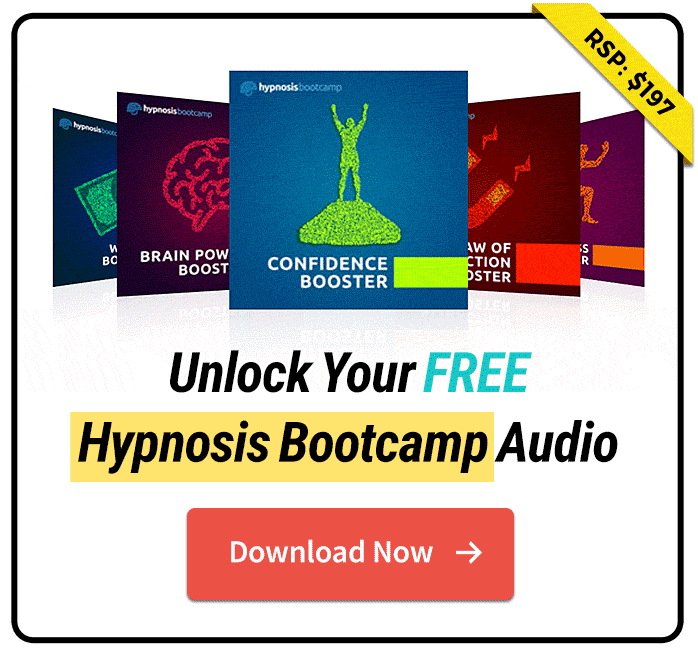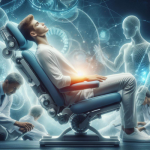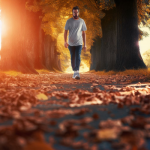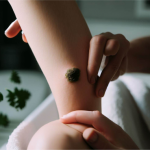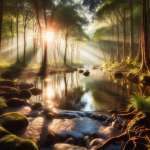Creativity is often viewed as a rare and elusive trait that only some people possess. It is commonly believed that creativity comes naturally to individuals who are born with it, while others struggle to tap into the creative part of their brain. However, this belief undermines the power of our brains and ignores the fact that unlocking creativity requires effort and practice.
The truth is that everyone has the potential to be creative, but we need to know how to access it. Whether you’re an artist looking for inspiration or someone in a business setting trying to come up with innovative ideas, unleashing your inner creativity can lead to greater success and fulfillment.
In this article, we will explore how you can unlock the creative part of your brain by understanding its functions and learning techniques that have been proven effective in enhancing creativity.
Understanding The Science Of Creativity
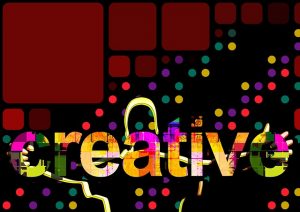 The science of creativity is a fascinating subject that has been studied by psychologists, neuroscientists, and other experts in the field. Understanding the brain and its processes can help unlock the creative part of your mind.
The science of creativity is a fascinating subject that has been studied by psychologists, neuroscientists, and other experts in the field. Understanding the brain and its processes can help unlock the creative part of your mind.
Creativity is not just about coming up with new ideas but also how you approach problems and challenges. Research shows that there are certain regions of the brain associated with creativity such as the prefrontal cortex, which is responsible for planning, decision making, and cognitive flexibility. The hippocampus is another area linked to creativity because it helps us retrieve memories and connect them in novel ways. Moreover, dopamine levels play a significant role in promoting creative thinking as it enhances motivation and attention.
Nurturing creativity requires balancing structure and spontaneity. Although structure can provide stability, too much rigidity can stifle creativity. On the other hand, complete freedom may lead to chaos rather than innovation. Therefore, finding a balance between both approaches is crucial for unlocking your creative potential.
In summary, understanding the science behind creativity can help individuals unleash their imaginative side while nurturing their abilities to think outside of conventional parameters. Balancing structure and spontaneity plays an essential role in fostering creativity without limiting oneself or becoming overwhelmed with disorderliness. By utilizing these insights into the workings of our brains’ creative processes we can tap into our full potential as innovators who are always exploring new concepts and pushing boundaries beyond what was thought possible before now!
Breaking Down Mental Blocks And Limitations
The science of creativity has provided us with a better understanding of how our brains work and how we can unlock the creative part of it. However, this knowledge alone is not enough for one to fully tap into their creativity.
One major challenge that most people face when trying to be creative is self-doubt. The fear of failure, rejection or criticism often leads to a lack of confidence in our ideas, making it difficult to explore new perspectives.
Overcoming self-doubt requires some level of courage and willingness to take risks. As a writer or any other creative person, you need to learn how to embrace imperfection as an essential aspect of the creative process.
Instead of focusing on producing perfect results, focus on generating as many ideas as possible without worrying about their outcome. You should also practice giving yourself permission to experiment with different techniques without being too hard on yourself if things don’t go as planned.
Exploring new perspectives means seeking inspiration from various sources beyond your typical routine. This could involve traveling, reading books written by authors outside your genre or attending workshops related to your field but taught by experts who see things differently than you do.
By exposing yourself to diverse experiences and viewpoints, you will gain fresh insights that can help you generate innovative ideas.
Unlocking the creative part of your brain requires more than just scientific knowledge; it involves overcoming mental blocks like self-doubt and exploring new perspectives through experimentation and exposure to diverse experiences. With time, patience and persistence, anyone can become a master at tapping into their imagination’s limitless possibilities.
Embracing The Unknown And Taking Risks
To unlock the creative part of your brain, it is important to embrace discomfort and take risks.
Embracing discomfort means stepping out of your comfort zone and trying new things that may make you feel uneasy or uncertain. It can be challenging to leave behind what feels safe and familiar, but doing so allows you to explore uncharted territory and discover new ideas.
Learning by doing is another crucial aspect of unlocking creativity. Rather than simply thinking about something, actively engaging in a task helps stimulate the mind and generate fresh insights.
This approach involves taking risks by experimenting with different approaches, even if they are not guaranteed to work. Through trial and error, we learn from our mistakes and gain valuable experience that informs future endeavors.
It’s worth noting that embracing discomfort does not mean pushing yourself beyond reasonable limits or putting yourself in harm’s way. Instead, it means being willing to try new things that challenge you without endangering your well-being or mental health. Similarly, learning by doing should involve calculated risks rather than reckless behavior.
In summary, unlocking creativity requires embracing discomfort and taking risks through learning by doing. By leaving behind what feels safe and familiar, we can explore new ideas and approaches while gaining valuable experience along the way. With practice, these habits become second nature – opening up endless possibilities for innovation and inspiration.
Engaging In Brainstorming And Idea Generation Techniques
To unlock the creative part of your brain, it is essential to engage in brainstorming and idea generation techniques. Collaborative sessions are an excellent way to stimulate creativity. When working with others, new ideas can emerge from various perspectives, experiences, and knowledge bases. Group brainstorming promotes free-flowing conversations that generate a wide range of innovative solutions.
Free association is another effective technique for unlocking the creative part of your brain. This method involves connecting unrelated concepts or words together to form new ideas. The process encourages you to think outside the box and challenge traditional ways of thinking. It allows you to explore different avenues without limiting yourself by preconceived notions.
During collaborative sessions or free association exercises, it’s important not to judge any ideas that come up initially. Instead, focus on generating as many thoughts as possible without filtering them through personal biases or self-criticism. In this way, all participants have equal opportunities to contribute their unique perspectives and insights.
Incorporating these techniques into your regular practice can help unleash your inner creativity and inspire more significant breakthroughs in your work. By doing so, you’ll be able to approach problems differently and find novel solutions that might otherwise remain hidden.
- Allow yourself time for experimentation.
- Focus on quantity rather than quality at first.
- Embrace failure as an opportunity for growth.
Unlocking the creative side of one’s mind takes patience, persistence, and most importantly – action! So go ahead; try some collaborative sessions or free association exercises today! You never know what brilliant ideas may arise when given space to take shape freely.
Practicing Mindfulness And Meditation
After engaging in brainstorming and idea generation techniques, it’s time to unlock the creative part of your brain by practicing mindfulness and meditation. This technique can help you relax, focus better, and boost creativity. However, before starting this practice, it’s essential to find the right meditation style that suits you.
There are different types of meditation styles such as guided meditations, Zen meditation, Vipassana meditation, etc. Each has its unique approach towards helping individuals reach a heightened state of awareness. Therefore, finding the right one for you might take some time and experimentation. You can also try combining two forms to achieve better results.
Tips for consistent practice include setting aside a specific time each day for meditation or incorporating it into your daily routine. Creating an environment conducive to relaxation is also essential; this could mean choosing a quiet room with low lighting or using aromatherapy oils like lavender to create a calming atmosphere.
Consistent practice leads to increased concentration levels and helps develop self-awareness while reducing stress levels. By making mindfulness and meditation part of your everyday life routine, you will be able to tap into your creativity effortlessly. Remember that cultivating any skill takes patience and perseverance but once achieved; the benefits are immense!
Seeking Inspiration From Different Sources
As the saying goes, ‘inspiration can be found everywhere.’ When it comes to unlocking the creative part of your brain, seeking inspiration from different sources is crucial. Allowing yourself to explore new experiences and connect with people can help you discover unique perspectives that may enhance your creativity.
Exploring nature is one way to gain inspiration for your artistry. Nature’s beauty has been a source of artistic expression since ancient times, and its peacefulness can provide an escape from daily life’s noise. Whether it’s hiking in the mountains or taking a walk in the park, being surrounded by natural surroundings allows our minds to wander and see things differently.
Immersing oneself in art is another effective way to inspire creativity. Taking time to visit museums or galleries exposes you to various styles and techniques, which can spark new ideas for your work. Attending concerts or theater performances also offers opportunities for inspiring creativity through music or storytelling.
Trying new experiences and connecting with people are other ways of gaining inspiration for your artwork. Participating in diverse activities such as traveling to unfamiliar places or trying out new hobbies provides fresh perspectives on life that might translate into innovative concepts for your creations. Meanwhile, interacting with individuals from various backgrounds can broaden your outlook on societal issues and motivate you to create works that communicate important messages.
In summary, unlocking the creative part of your brain requires actively seeking inspiration from outside sources. Exploring nature, immersing oneself in art, trying new experiences, and connecting with people are all excellent means of uncovering hidden inspirations that fuel artistic innovation without relying solely on personal experience alone.
Cultivating A Creative Mindset And Environment
Creative individuals may often find themselves struggling to tap into their creative potential. While some people are born with an innate creative ability, there are ways to unlock the creativity within oneself.
Collaborative creativity is one such way that can facilitate the unleashing of one’s artistic abilities. Collaborating with others allows for new ideas and perspectives to be shared, leading to innovative solutions or works of art. This type of teamwork fosters an environment where everyone involved feels comfortable expressing their thoughts and opinions without fear of judgment or criticism. By working together, participants build off each other’s strengths while also learning from each other’s weaknesses.
Additionally, engaging in creative hobbies outside of work or school can help foster a more imaginative mindset. Whether it be painting, writing, playing music, or even cooking – participating in activities that spark joy can lead to newfound inspiration and motivation. These hobbies allow individuals to explore different mediums and techniques they may not have otherwise considered.
Creating an environment conducive to creativity is essential as well. Ensuring adequate lighting, minimizing distractions, and having access to necessary materials all contribute to fostering a productive space. Taking breaks when feeling creatively drained can also prevent burnout and provide time for reflection on what has been accomplished thus far.
In sum, unlocking the creative part of your brain involves cultivating a collaborative mindset through teamwork and embracing individual talents while also stepping out of comfort zones by exploring new hobbies. Creating a suitable workspace with minimal disruptions further facilitates this process. By following these steps consistently over time, anyone can harness their inner artist!
Frequently Asked Questions
Can Creativity Be Learned Or Is It An Innate Ability?
The debate over whether creativity is an innate ability or a learned skill has been ongoing for years.
While some individuals may possess a natural inclination towards creative thinking, nurturing creativity requires the right environment and mindset.
A creative environment fosters exploration of ideas and experimentation with new approaches without fear of failure.
Additionally, dedication to practicing creative thinking techniques can help develop one’s capacity for innovation.
Thus, while genetics may play a role in determining individual creativity levels, it is essential to cultivate creativity through environmental factors and conscious effort.
How Can I Overcome The Fear Of Failure And Rejection When Trying To Be Creative?
Overcoming fear and building confidence are essential in unleashing one’s creativity. Fear of failure and rejection often plagues individuals, hindering them from exploring their creative potential fully.
To overcome this obstacle, it is crucial to recognize that failure is a natural part of the creative process. Embracing mistakes and learning from them can lead to significant breakthroughs.
Additionally, creating without judgment or expectation allows for an open-minded approach towards one’s work. Building self-confidence through practice and positive reinforcement also helps alleviate anxiety surrounding creative endeavors.
Approaching each project with curiosity rather than stress fosters a more relaxed mindset conducive to exploration and innovation. Ultimately, overcoming fears associated with creativity requires patience, perseverance, and a willingness to take risks despite uncertainty.
What Are Some Effective Ways To Balance Structure And Spontaneity In The Creative Process?
Effective brainstorming techniques are essential for any creative process, as they cultivate a space where ideas can flourish. However, it is equally important to embrace mistakes and allow room for spontaneity in the process.
A balance between structure and flexibility allows for both planning and improvisation, resulting in a well-rounded final product.
As a creative writing expert, I recommend setting aside time specifically for brainstorming sessions where all ideas are welcome, no matter how unconventional they may seem. From there, create a loose outline or plan that leaves room for unexpected detours or changes.
By embracing the unpredictability of the creative process and finding ways to incorporate it into your structure, you will unlock new levels of creativity within yourself.
Can Mental Health Issues Such As Anxiety Or Depression Hinder Creativity, And If So, How Can They Be Addressed?
Mental health issues such as anxiety and depression can greatly hinder creativity, making it difficult for individuals to tap into their creative potential.
Coping mechanisms are essential in managing these mental health conditions while still being able to engage in the creative process.
One possible coping mechanism is mindfulness meditation, which has been shown to reduce symptoms of anxiety and depression while also improving creativity.
Additionally, therapy can be a valuable tool for those struggling with mental health issues by helping them identify and address any underlying psychological barriers that may be preventing them from accessing their full creative potential.
By incorporating both coping mechanisms and therapy into their lives, individuals can effectively manage their mental health concerns while still tapping into the vast reserves of creative energy within themselves.
How Can I Sustain My Creativity And Prevent Burnout Or Creative Blocks In The Long Term?
Sustaining creativity and preventing burnout or creative blocks in the long term involves establishing creative routines and seeking out inspiration sources.
Creative routines can help develop a consistent practice that fosters productivity and growth while also allowing for a sense of structure and discipline.
Inspiration sources, on the other hand, offer an opportunity to explore new ideas, perspectives, and techniques outside of one’s typical routine.
By incorporating both into one’s artistic process, individuals can maintain their creative momentum while avoiding stagnation or exhaustion.
Conclusion
Creativity is a complex and multifaceted concept that has been the topic of much debate among scholars and artists alike. While some argue that creativity is an innate ability, others maintain that it can be learned through training and practice.
Regardless of one’s perspective on this issue, there are several strategies that individuals can use to unlock their creative potential.
One effective approach is to embrace spontaneity while also maintaining a sense of structure in the creative process. This involves setting clear goals and parameters for one’s work while also allowing room for experimentation and improvisation.
Additionally, addressing mental health issues such as anxiety or depression can help to remove barriers to creativity and promote greater self-expression.
Ultimately, sustaining creativity over the long term requires commitment and perseverance. By staying engaged with one’s artistic passions and seeking out new sources of inspiration, individuals can continue to grow creatively even when faced with challenges or setbacks.
Like a river flowing steadily towards its destination, the creative journey may have twists and turns along the way but ultimately leads us to our truest selves – where we find meaning, purpose, and fulfillment in our lives.
